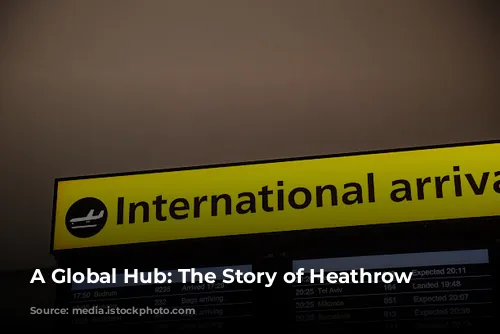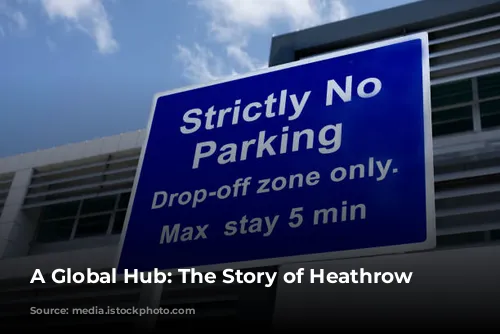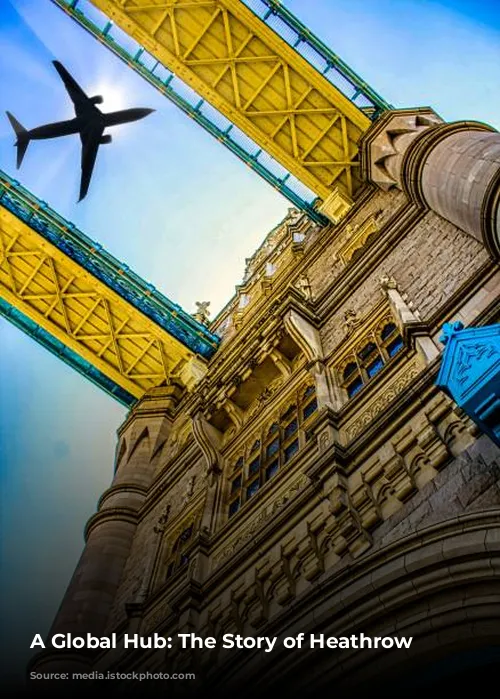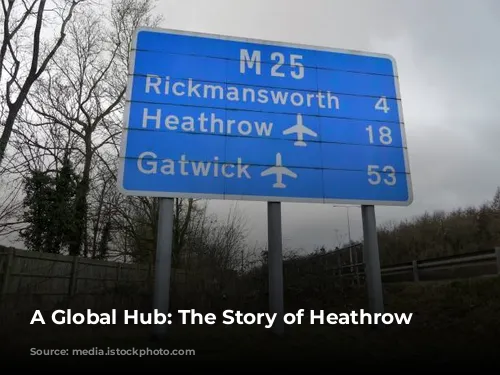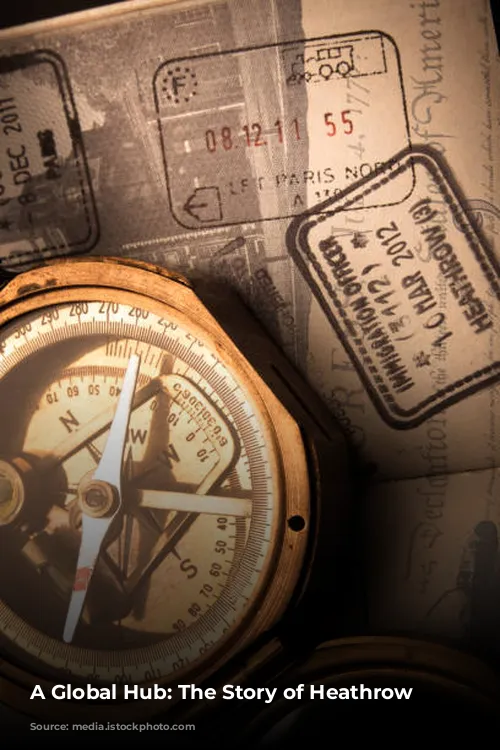Heathrow Airport is a giant of the aviation world, a bustling gateway connecting the United Kingdom to the rest of the globe. This massive airport, the largest and busiest in the UK, sees millions of travelers pass through its terminals each year. It’s a truly global hub, serving over 200 destinations in more than 80 countries!
Did you know? British Airways, the UK’s flag carrier, dominates Heathrow, operating half of all flights from the airport. Popular destinations include Dubai, New York City, and Madrid, attracting travelers from all over the world.

From Grass Runway to Modern Marvel
Heathrow’s story began in the 1930s with a simple vision. Richard Fairey, a British engineer, purchased a plot of land in Harmondsworth and built a private airfield called the Great West Aerodrome. This humble beginning included a single grass runway and a few small buildings.
During World War II, the government took over the airfield, renaming it RAF Heston and using it for long-range flights carrying troops to Asia. This marked the start of Heathrow’s evolution from a small airfield to a vital hub for the nation’s defense.
A Post-War Transformation
After the war, the airfield was handed over to the Air Ministry and opened to the public as London Airport on January 1, 1946. The first flight, a converted bomber called Starlight, took off to Buenos Aires, a journey that took a remarkable 35 hours with multiple refueling stops!
The airport was still in its early stages, with temporary structures serving as terminals. But as commercial air travel soared in the 1950s, the need for permanent facilities became clear. Frederick Gibberd, a renowned British architect, was commissioned to design two state-of-the-art terminals, later renamed Terminal 2 and Terminal 3. In 1966, London Airport was officially renamed Heathrow, a name derived from the village of Heath Row, which once stood on the land.

A Growing Airport, a Growing Future
Heathrow’s growth didn’t stop there. Terminal 4 opened in 1986, and in 2008, Terminal 5, the largest terminal at Heathrow, was completed. This impressive terminal, designed by Richard Rogers, is the main hub for British Airways. Terminal 1 no longer exists, replaced by an expanded Terminal 2.
Heathrow is more than just an airport. In 1998, the Heathrow Express began service, a high-speed train connecting the airport directly to London Paddington station. The journey takes just 15 minutes, offering a convenient and efficient way to reach the airport. The Elizabeth Line and the London Underground’s Piccadilly Line also connect Heathrow to the city, providing convenient options for travelers.

A Future in the Making
Heathrow’s impact extends far beyond travel. It employs over 75,000 people, making it one of the UK’s largest single-site employers. And as the number of passengers continues to increase, expansion plans have been debated for years, including the construction of a third runway.
These plans have faced numerous obstacles, including political challenges and legal battles. However, in 2019, the plans for a third runway were approved, with an initial completion target of 2026. Despite this approval, construction hasn’t begun yet, and media reports suggest that the plans may have been shelved.
Heathrow’s future remains uncertain, but one thing is clear: this iconic airport will continue to play a vital role in connecting the UK to the world.

